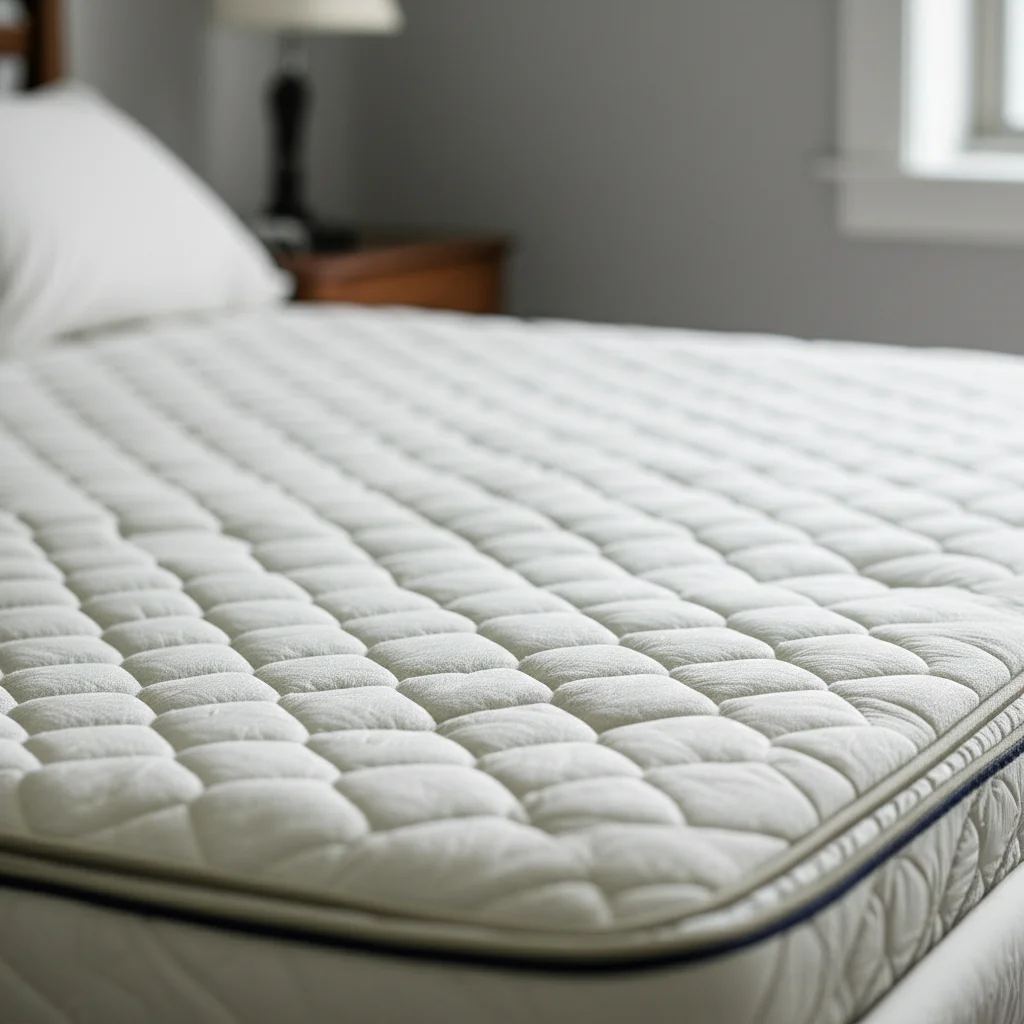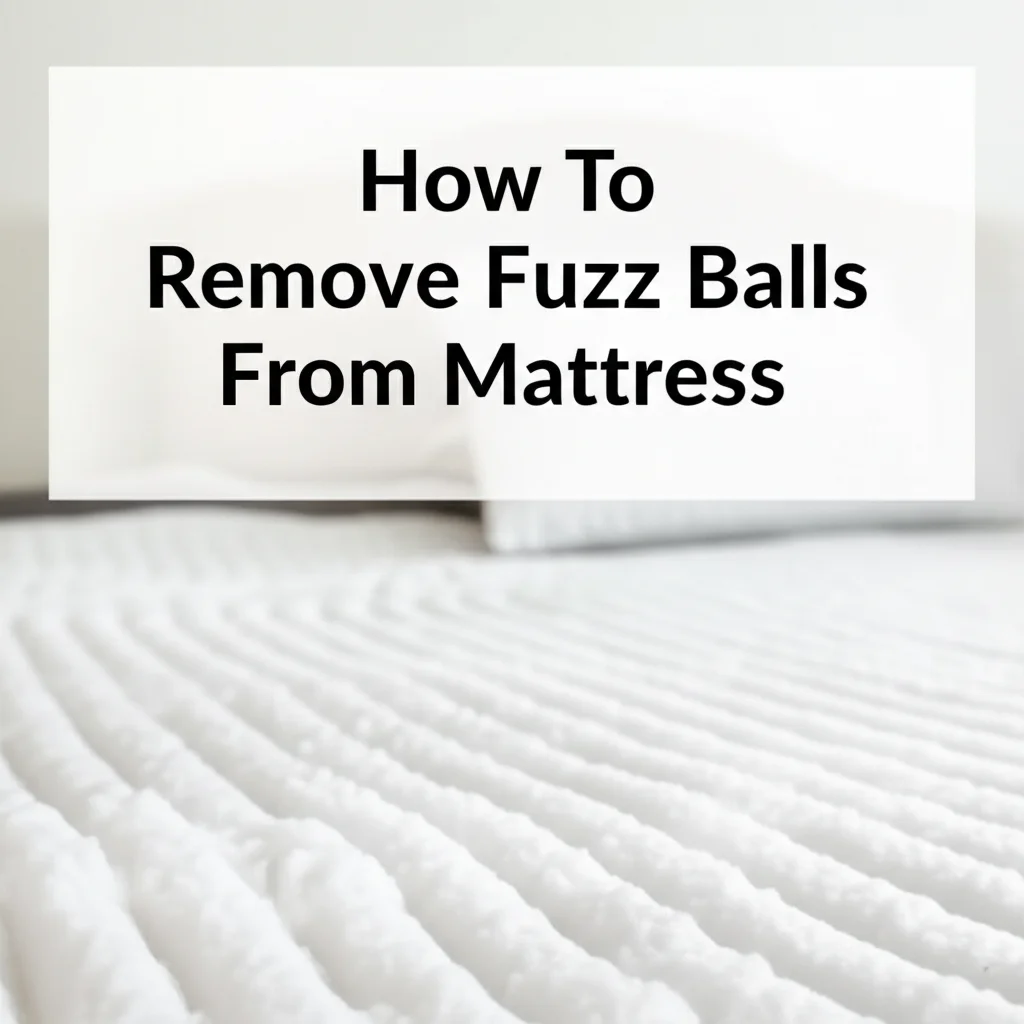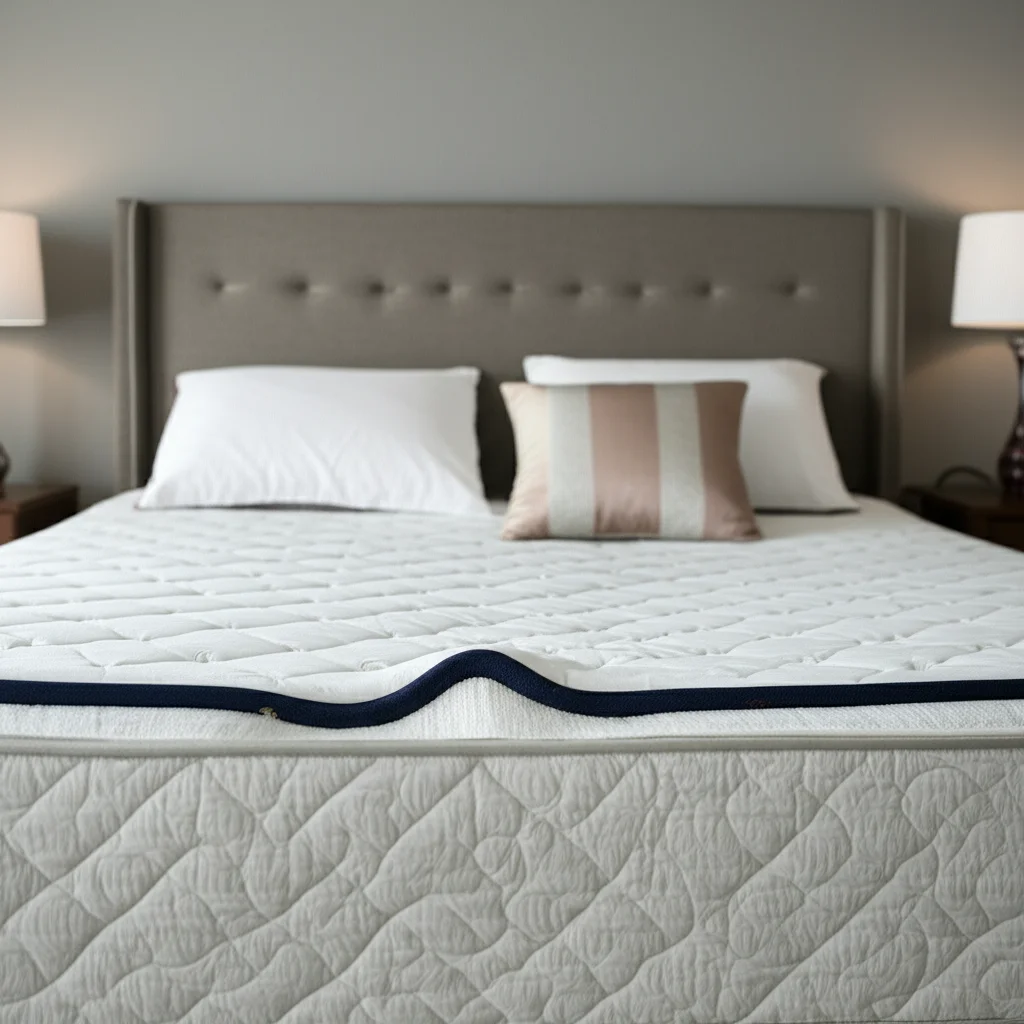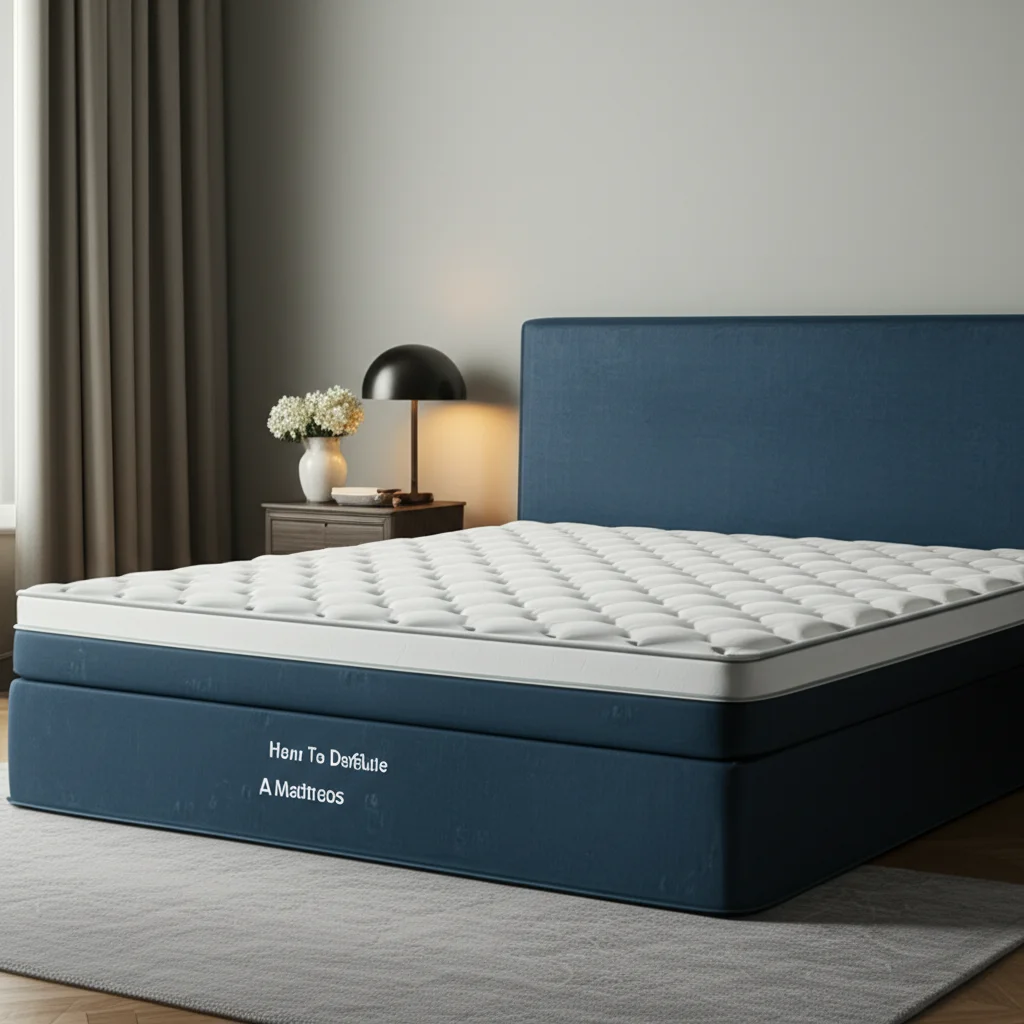· Todd Martin · Mattress Care · 17 min read
How To Fold A Mattress

Mastering the Fold: How to Fold a Mattress Safely
Have you ever faced the challenge of moving or storing a bulky mattress? It often feels like a giant, unyielding obstacle. Many people wonder if they can even fold a mattress to make it smaller. The good news is that folding a mattress is possible for certain types, making transport or storage much easier. This guide will show you how to fold a mattress, covering different materials and the right techniques. You will learn the necessary steps and tools for a successful fold, along with important safety tips.
Takeaway
Folding a mattress simplifies moving and storage, but it depends on the mattress type.
- Memory foam and latex mattresses are generally safe to fold or roll.
- Innerspring mattresses cannot be folded without damage.
- Air mattresses are designed to be deflated and folded.
- Use proper tools like vacuum bags and straps for best results.
- Prioritize safety to prevent injury and mattress damage.
How to Fold a Mattress: Quick Answer
You can fold or roll many mattresses, especially those made from memory foam or latex, to save space for moving or storage. The specific method depends on the mattress material. Innerspring mattresses typically cannot fold without causing permanent damage to their internal structure. Air mattresses fold easily after deflation.
Understanding Mattress Types Before You Fold
Knowing your mattress type is the first step before you attempt to fold it. Not all mattresses are created equal when it comes to flexibility. Folding the wrong type can cause irreversible damage. Let’s break down which mattresses are suitable for folding and which are not. This knowledge helps you avoid costly mistakes.
Memory Foam and Latex Mattresses: The Best Candidates
Memory foam and latex mattresses are the most flexible options for folding. Their unique composition allows them to conform and compress. These materials lack rigid internal structures, making them ideal for rolling or folding. You can significantly reduce their size for transport or storage. This makes them popular choices for people who move frequently.
These mattresses return to their original shape after being unfolded. They handle compression well without losing their comfort. I find that these types are the easiest to manage. This flexibility is a major advantage for these mattress materials.
Hybrid Mattresses: Proceed with Caution
Hybrid mattresses combine different materials, often including memory foam, latex, and innerspring coils. Their coil component makes them less flexible than pure foam or latex. Folding a hybrid mattress risks bending or damaging the springs inside. This can lead to uncomfortable lumps or reduced support.
You might be able to gently fold a hybrid if it has a very thin coil layer and a thick foam layer. However, this is not always recommended. If you must fold a hybrid, do so minimally and for a very short duration. This helps prevent structural problems.
Innerspring Mattresses: Not Recommended for Folding
Innerspring mattresses contain a system of metal coils that provide support. These coils are designed to remain flat and stable. Attempting to fold an innerspring mattress will almost certainly damage these coils. The springs can bend, snap, or become dislodged. This will ruin the mattress, making it uncomfortable and unusable.
Folding an innerspring mattress also voids most warranties. You should never try to fold an innerspring mattress for moving or storage. Instead, transport these mattresses flat or on their side. Protecting your investment means knowing its limitations.
Air Mattresses: Designed for Folding
Air mattresses are unique in that they are specifically designed to be deflated and folded. They contain no solid internal structure. Once the air is removed, they become pliable and compact. This design makes them excellent for temporary sleeping arrangements or camping.
Folding an air mattress is simple and straightforward. You just need to ensure all air is out before you begin. This allows for the smallest possible storage footprint. I always appreciate how easy air mattresses are to pack away. You can find specific guides on how to fold an air mattress, even those with built-in pumps or general inflatable mattresses.
Essential Tools and Preparation for Folding Your Mattress
Before you start folding, gather the right tools. Proper preparation makes the job easier and safer. It also helps protect your mattress from damage. Skipping these steps can lead to frustration or harm to your bed. I always recommend having everything ready beforehand.
Gathering the Right Supplies
You will need a few key items to fold a mattress effectively. These supplies ensure a smooth process. They also help keep the mattress secure once folded. Do not start without these.
- Heavy-duty ratchet straps or rope: These are crucial for securing the mattress once it’s rolled. They provide strong compression.
- Large vacuum storage bag (for foam mattresses): A specialized bag designed for mattresses can remove air. This greatly reduces the mattress’s volume. Using a vacuum bag is the most effective way to compress foam.
- Vacuum cleaner with a hose attachment: If using a vacuum bag, this is essential for air removal. Ensure it has good suction power.
- Durable plastic sheeting or mattress bag: This protects the mattress from dirt and moisture. It is especially important for storage.
- Duct tape: Useful for sealing plastic bags or securing covers.
- Measuring tape: To measure your mattress and ensure your bag or space is adequate.
- Another person (optional but recommended): Folding a large mattress is much easier with help. An extra pair of hands provides support and leverage.
Clearing and Cleaning the Area
Prepare your space before you begin. You need a large, clean area to work. This prevents the mattress from getting dirty during the process. Clear away any furniture or obstacles.
Ensure the floor is clean and dry. Dust, dirt, or moisture can transfer to your mattress. If you are moving, this is a good time to give your mattress a quick clean. A clean mattress is better for storage. This step sets you up for success.
Preparing Your Mattress
Before folding, remove all bedding. This includes sheets, blankets, and mattress protectors. Store these items separately. A bare mattress is easier to handle.
If your mattress has any removable covers, check the manufacturer’s instructions. Some covers are designed to stay on. Make sure the mattress is completely dry. Any moisture can lead to mold or mildew during storage. This preparation is simple but important.
Step-by-Step Guide: Folding Memory Foam and Latex Mattresses
Folding memory foam or latex mattresses is the most straightforward. Their flexible nature makes them ideal for compression. You can use two primary methods: vacuum sealing for long-term storage or simple rolling for short-term transport. Both methods aim to reduce the mattress size. I prefer vacuum sealing for maximum space-saving.
Method 1: Vacuum Sealing for Maximum Compression
This method offers the greatest reduction in size. It is perfect for long-term storage or moving. A vacuum storage bag creates a compact package. This process requires a specific type of bag and a vacuum cleaner.
- Place the mattress into the vacuum bag: Unfold the large mattress vacuum bag on a clean floor. Carefully slide your memory foam or latex mattress into the bag. Make sure the mattress lays flat and is centered inside. This prevents uneven compression.
- Seal the bag: Follow the bag’s instructions to seal it completely. Most bags have a zipper closure. Ensure the seal is tight to prevent air from re-entering. A good seal is crucial for effective vacuuming.
- Attach the vacuum cleaner: Locate the air valve on the vacuum bag. Attach your vacuum cleaner hose securely to this valve. Make sure the connection is snug. This allows for efficient air extraction.
- Extract the air: Turn on your vacuum cleaner. Watch as the mattress slowly compresses and flattens. Guide the vacuum over the mattress to help distribute the compression evenly. This step takes some time, depending on your vacuum’s power.
- Roll or fold the compressed mattress: Once the air is mostly out, the mattress will be much smaller and denser. You can now roll it tightly from one end to the other. If the mattress is smaller, you might fold it in half or thirds. Be careful not to crease it sharply. For a clear visual, think about how some new mattresses come back in their box.
- Secure with straps: After rolling or folding, use heavy-duty ratchet straps or strong rope to secure the compressed mattress. Wrap the straps tightly around the mattress in several places. This keeps it from expanding again.
- Seal the valve: Quickly close the air valve on the vacuum bag after turning off the vacuum. This prevents air from re-entering. Your mattress is now ready for transport or storage. The process of vacuum sealing a mattress can make a huge difference in size.
Method 2: Simple Rolling/Folding for Short-Term Needs
This method is suitable for short moves or temporary storage. It does not compress the mattress as much as vacuum sealing. However, it requires fewer specialized tools. It’s quicker for immediate needs.
- Lay the mattress flat: Place the memory foam or latex mattress on a clean, flat surface. Ensure you have plenty of room to work around it.
- Begin rolling: Start at one end of the mattress. Begin to roll it tightly towards the opposite end. Apply continuous pressure as you roll. This helps keep the roll compact.
- Use your body weight: You might need to kneel on the rolled sections as you go. This helps to squeeze out air and maintain a tight roll. If you have a helper, one person can hold the rolled section while the other continues rolling.
- Secure the roll: Once the mattress is fully rolled, immediately secure it with heavy-duty ratchet straps or strong rope. Wrap the straps tightly around the rolled mattress in at least three places (middle and both ends). This prevents it from unrolling.
- Protect for transport/storage: Wrap the rolled mattress in thick plastic sheeting or a mattress bag. Secure the plastic with duct tape. This protects it from dirt and damage during transport or storage. This simple method works well for quick moves.
Handling Hybrid and Innerspring Mattresses: What to Know
The structure of hybrid and innerspring mattresses makes folding a challenge. These types contain metal coils that do not bend easily. Attempting to force them into a folded position can cause permanent damage. Understanding these limitations is important for protecting your investment.
Why Innerspring Mattresses are Different
Innerspring mattresses rely on a network of metal coils for support and structure. These coils are designed to bear weight and maintain shape when flat. They are not made to be bent or creased. When you try to fold an innerspring mattress, you risk several problems. The coils can become permanently deformed, leading to sagging areas. Springs might even break or poke through the fabric. This makes the mattress uncomfortable and unusable.
Manufacturers do not design innerspring mattresses for folding. Doing so will void the warranty. Always transport these mattresses flat or on their side. Never attempt to fold them. Protecting your innerspring mattress means respecting its design.
Limited Folding for Hybrids
Hybrid mattresses present a mixed scenario. They combine foam layers with a coil system. The degree of flexibility depends on the specific construction. If the coil layer is thin and the foam layers are substantial, a gentle, minimal fold might be possible. However, this carries risks. You could still damage the springs if you fold too sharply or for too long.
I recommend avoiding folding hybrid mattresses if possible. If you must, consider only folding it once, gently, and for a very short period. This is not ideal for long-term storage. For moving a hybrid mattress, especially larger sizes, it’s safer to move it flat. This prevents any damage to the internal components. For some mattresses, like a Tempurpedic mattress, which are often pure memory foam, folding is safe. But for true hybrids, exercise caution.
Folding Air Mattresses for Compact Storage
Air mattresses are different from traditional foam or spring beds. They are specifically designed to be deflated and stored compactly. This makes them incredibly convenient for guests or camping trips. Proper deflation and folding maximize their lifespan and storage efficiency. I find these the easiest to manage.
Deflating Correctly
The key to folding an air mattress is complete deflation. Any trapped air will prevent a tight, compact fold. Most air mattresses have a built-in pump or a large valve for quick deflation.
- Locate the air valve: Find the main air valve or pump on your air mattress. Some mattresses have separate valves for inflation and deflation.
- Open the valve or activate the pump: If it’s a manual valve, open it fully. If it has a built-in pump, switch it to the “deflate” setting. This will start pulling air out of the mattress.
- Assist deflation: As the air escapes, gently press down on the mattress. Start from the end opposite the valve and work your way towards it. This helps push out residual air. You can also walk on the mattress or roll it slowly to force air out. Make sure all air is gone before you start folding. If your air mattress has a built-in pump, this process is often easier.
Folding Techniques for Air Mattresses
Once deflated, an air mattress becomes very pliable. You can fold or roll it into a small package. The goal is to make it as compact as possible for its storage bag.
- Lay the deflated mattress flat: Spread the completely deflated air mattress on a clean, flat surface. Smooth out any wrinkles or bumps.
- Fold lengthwise: Fold the mattress in half lengthwise. If it is a large mattress, you might fold it into thirds. Ensure the edges align neatly. This creates a long, narrow strip.
- Fold or roll crosswise: Once folded lengthwise, you can either continue folding it crosswise or start rolling it.
- Folding: Fold the mattress in half again, then continue folding until it reaches a desired size. Press out any remaining air as you fold.
- Rolling: Start at one end and roll the mattress tightly towards the other end. Apply pressure as you roll to keep it compact.
- Secure and store: Use straps or a bungee cord to secure the folded or rolled air mattress. Place it inside its original storage bag or a protective carry bag. This keeps it clean and ready for its next use. Following these steps helps deflate your mattress properly and prepare it for storage.
Safety Tips and Important Considerations When Folding a Mattress
Folding a mattress requires care to prevent injury or damage. It is a large, sometimes heavy item. Safety must be your top priority. Following these guidelines helps ensure a smooth and risk-free process. Always think about your well-being first.
Prevent Injury During Folding
Working with a large mattress can be physically demanding. Protect yourself from strain or accidents.
- Lift with your legs: When moving or lifting the mattress, bend your knees and keep your back straight. Do not lift with your back. This prevents back injuries.
- Teamwork makes the dream work: If possible, always have another person help you. Two people can manage the mattress much more easily. They can lift, roll, and secure more safely than one person.
- Clear your path: Ensure the area around you is free of tripping hazards. You need clear space for movement. This reduces the risk of falls.
- Wear appropriate clothing: Wear comfortable clothes that allow free movement. Avoid loose clothing that could get caught. Closed-toe shoes protect your feet.
Avoid Damage to Your Mattress
Improper folding can ruin your mattress. Protect your investment by handling it correctly.
- Know your mattress type: As discussed earlier, do not fold innerspring mattresses. Only fold types that are flexible, like memory foam or latex.
- Do not over-compress: While vacuum sealing is effective, do not try to compress foam mattresses beyond their natural limits. Excessive force can damage the foam’s structure.
- Avoid sharp creases: When folding foam, try to create soft, rounded folds or rolls. Sharp creases can create weak spots in the foam.
- Protect from elements: Always use a plastic mattress bag or thick sheeting. This protects the mattress from dirt, dust, moisture, and pests during transport or storage. This is especially important if you are storing it in a place like a garage.
Understanding Warranty Implications
Mattress warranties vary by manufacturer. Most warranties do not cover damage caused by improper handling.
- Read your warranty: Before folding, check your mattress warranty terms. Folding an innerspring mattress will almost certainly void its warranty.
- Temporary vs. permanent: Some foam mattresses are designed to be rolled or vacuum-sealed. This is part of their initial packaging. However, continuous folding or very long-term compression outside of specific guidelines might still affect a warranty. When moving a mattress, handling it according to its type is crucial for preserving its condition and warranty.
Long-Term Storage Tips
If you plan to store your mattress for an extended period, follow these tips.
- Store in a climate-controlled area: Avoid extreme temperatures or humidity. These conditions can degrade mattress materials over time.
- Elevate off the floor: If possible, store the mattress on a raised platform or pallet. This protects it from ground moisture and allows air circulation.
- Check periodically: If stored for a very long time, occasionally check on the mattress. Ensure there are no signs of mold, mildew, or pests.
Frequently Asked Questions About Folding a Mattress
Can you fold any type of mattress?
No, you cannot fold every type of mattress. Memory foam and latex mattresses are flexible and can be safely folded or rolled. Innerspring mattresses, which contain metal coils, will be permanently damaged if folded. Hybrid mattresses, with coils, should also generally not be folded or only folded very gently for short periods.
How long can a memory foam mattress stay folded?
A memory foam mattress can typically stay folded or rolled for several weeks or even a few months, especially if vacuum-sealed. However, for best results and to prevent permanent compression, it is ideal to unroll or unfold it as soon as possible. Avoid storing it folded for extremely long durations, such as a year or more.
What tools do I need to fold a mattress?
To fold a mattress, especially a foam one, you will need heavy-duty ratchet straps or strong rope to secure it. For maximum compression, a large vacuum storage bag designed for mattresses and a vacuum cleaner with a hose attachment are essential. You will also need durable plastic sheeting or a mattress bag for protection.
Will folding a mattress damage it?
Folding a mattress can damage it if it’s the wrong type or done improperly. Innerspring mattresses will be damaged by folding due to their coil structure. Memory foam and latex mattresses are designed to be flexible and generally will not be damaged if folded correctly. Vacuum sealing them is often the safest method for significant compression.
Is it better to roll or fold a memory foam mattress?
For memory foam mattresses, rolling is generally preferred over sharp folding. Rolling creates gentler curves, which are less likely to create permanent creases or weak spots in the foam. If you use a vacuum bag, the mattress will become very dense, making it easier to roll tightly and more compactly than folding.
Can I fold a mattress without a vacuum bag?
Yes, you can fold or roll a memory foam or latex mattress without a vacuum bag. However, it will not be as compact. To do this, simply roll the mattress tightly from one end to the other, applying pressure as you go. Once rolled, secure it immediately with strong ratchet straps or ropes to keep it from unrolling. This method is best for short-term transport.
Conclusion
Folding a mattress might seem like a daunting task, but it is certainly achievable for certain types. Understanding your mattress material is the first critical step. Memory foam and latex mattresses are excellent candidates for compression and rolling, offering great space-saving benefits for moving or storage. Conversely, innerspring mattresses should never be folded due to their rigid coil structure, which can easily be damaged. Hybrid mattresses require extreme caution, if folded at all.
By using the right tools—like vacuum bags and sturdy straps—and following the correct techniques, you can safely fold a mattress. Remember to prioritize safety throughout the process. This includes lifting properly and having help when needed. Always protect your mattress with plastic sheeting for transport or storage. This guide provides clear steps to help you master how to fold a mattress. You can confidently manage your bulky bedding for your next move or to reclaim valuable space.





